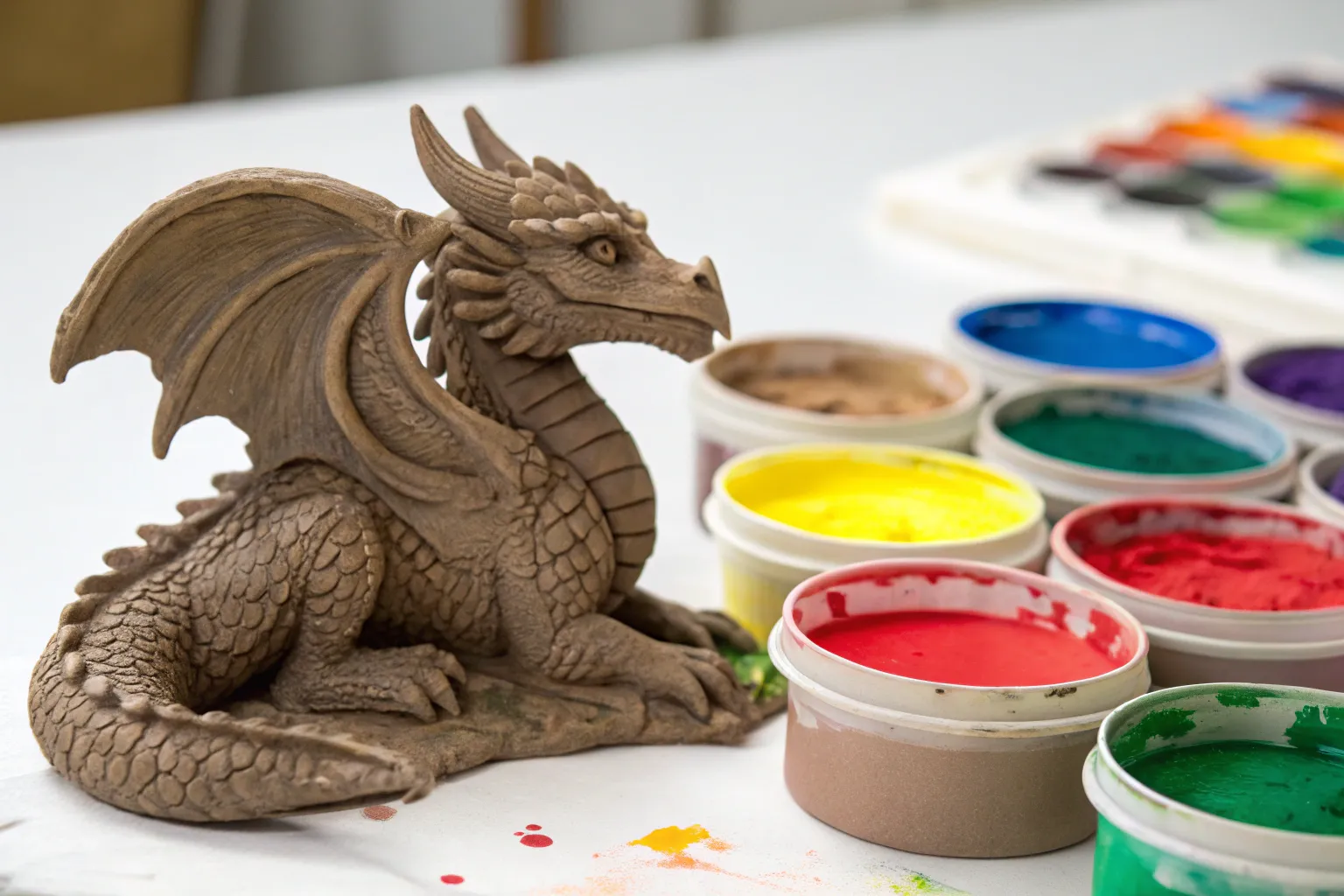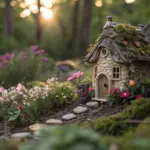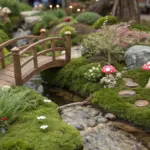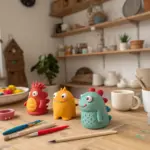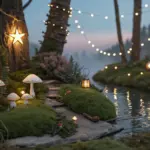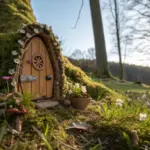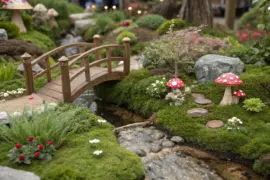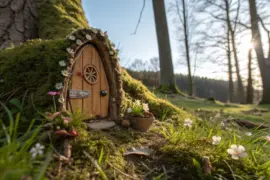There’s something magical about watching a small ball of clay transform into a tiny dragon curled around a pebble, or a miniature unicorn with a spiraling horn. Every mythical creature you shape holds a bit of wonder—and creating them is simpler than you might imagine.
Choosing Your Clay: The Foundation of Your World

When you’re just starting out, choosing the right clay makes all the difference. You have two wonderful options, each with its own personality.
Air-dry clay feels soft and forgiving in your hands. It’s perfect for spontaneous creation—no oven needed. Brands like DAS or Crayola work beautifully for beginners and children. This clay loves to be smoothed with damp fingers and dries naturally over a couple of days. The trade-off? Once dry, it becomes more delicate, especially thin pieces like dragon wings or unicorn legs. But for many creatures, especially those you’ll paint in vibrant colors, it’s an ideal choice.
Polymer clay stays soft and workable until you bake it in a regular home oven. This gives you time to perfect every scale and feather without rushing. After baking at the right temperature (usually around 275°F or 130°C for 30 minutes to an hour), it becomes durable and slightly flexible. Sculpey, Premo, and Fimo are trusted names. If you want creatures that can be handled and played with, polymer clay offers wonderful strength.
Both types are non-toxic and safe to use at home. Choose air-dry clay for relaxed, painted projects. Choose polymer clay when you want finer details and lasting strength.
Building Your Creature from the Inside Out

I’ve learned that the secret to a successful mythical creature isn’t starting with clay at all—it’s building a simple skeleton first.
Creating an armature means giving your creature bones. For small dragons or phoenixes, this can be as simple as crumpling aluminum foil into the basic body shape. The foil creates volume without using too much clay, and it prevents cracking as your piece dries. For creatures with delicate legs or long tails, add a piece of wire (floral wire works beautifully) twisted through the foil for support.
Here’s how to build a basic four-legged creature armature:
- Cut a piece of wire about 9 inches long for medium creatures
- Twist or wrap thinner wire around it for extra grip (clay loves texture)
- Add small balls of crumpled foil for the head, body, and haunches
- Wrap everything loosely with more foil to create the general shape
- Leave the form slightly smaller than your final creature—you’ll add clay over the top
For simpler creatures like curled-up baby dragons or resting unicorns, you can skip the wire and just shape foil into the pose you want. The key is making sure air can’t get trapped between your foil and clay—gently press the clay down as you work from one side to the other.
Simple Shapes, Magical Results

Every mythical creature begins with basic shapes. When you break down even the most elaborate dragon into simple parts—spheres, cylinders, teardrops—creation becomes joyful rather than overwhelming.
For a miniature dragon:
- Roll a thick log for the body, tapering one end into a tail
- Bend it into a gentle S-curve for personality
- A smaller teardrop becomes the head
- Four little teardrop shapes, flattened at one end, become feet
- Two triangular pieces transform into wings
For a simple unicorn:
- A cylinder body, slightly cone-shaped
- Four small cylinders for legs
- A ball or teardrop for the head with tiny triangle ears
- One thin, gently twisted rope of clay creates that spiraling horn
For a phoenix or bird creature:
- Start with an oval body
- Add a smaller oval or teardrop head
- Wings can be flat teardrop shapes with feather details added later
The beauty of working with mythical creatures is that there’s no “correct” version. Your dragon can have chunky legs or delicate ones. Your unicorn can have large eyes or small. Let your imagination guide the proportions.
Attaching Parts with Confidence
Nothing feels worse than watching a carefully crafted dragon wing fall off. But attachment is actually quite simple when you know the trick: water for air-dry clay, liquid clay or gentle blending for polymer.
For air-dry clay, lightly wet both surfaces you’re joining and gently press them together. Use a damp finger or a soft tool to smooth the seam where they meet. This creates a strong bond as the clay dries.
For polymer clay, you can use a tiny drop of liquid polymer clay (like Sculpey Bake and Bond) as glue, or simply blend the raw pieces together using a rounded tool. Press gently, then smooth the joint by rubbing in small circles with a silicone tool or your finger.
If parts keep falling off while you work, they might be too heavy or the clay too soft. Try letting air-dry clay firm up slightly (not completely dry) before attaching delicate pieces. For polymer clay, pop your creature in the refrigerator for 10 minutes to firm it up, then add the next part.
Adding Personality: Eyes, Expressions, and Details

A mythical creature comes alive when you add its face. This is where you can truly play.
Eyes are surprisingly simple. Press two gentle indents into the face with a rounded tool (even a pen cap works). Add two tiny balls of contrasting clay and press them into the indents. For extra sparkle, add even tinier dots of white or light clay in the corners—instant life. Some creatures look magical with closed eyes, created simply by pressing a gentle curved line with a toothpick.
Mouths and noses can be as easy as a gentle smile made with a toothpick or sculpting tool pressed into the clay. For dragon snouts, pinch the clay gently to create a triangular shape, then add two tiny indents for nostrils.
Ears and horns are just small triangles or cones attached to the head. Tiny horns can be made by rolling clay between your fingers into thin points. For ears, flatten small triangles slightly and use a tool to press a gentle curve in the center before attaching.
Don’t worry about perfection. Slightly asymmetrical eyes or a crooked smile often give creatures more charm and personality.
Creating Texture: Scales, Fur, and Feathers

Texture transforms simple shapes into believable creatures. You don’t need fancy tools—your kitchen and craft box hold everything you need.
For dragon or fish scales, try these approaches:
- Cut a drinking straw into a U-shape and press it repeatedly into the clay in overlapping rows
- Use the round end of various bottle caps or tubes in different sizes for reptilian skin texture
- Create individual scales by cutting tiny upside-down U-shapes with small scissors, working in rows from head to tail
For fur texture:
- A toothbrush pressed gently into the clay creates wonderful fuzzy texture
- Make tiny cuts with a craft blade in the direction the fur grows, working from the head backward
- For longer fur, add thin snakes of clay and use a tool to make fine parallel lines along each strand
For feathers:
- Start with flattened teardrop shapes of clay
- Press a center line down the middle with a toothpick (the quill)
- Add fine parallel lines from the center outward on both sides
- Overlap feathers like roof shingles, with those at the head covering those toward the tail
The secret to good texture is working gently and building up layers. You can always add more detail, but it’s hard to remove too much.
Smoothing and Finishing: The Gentle Touch
Sometimes you want a perfectly smooth surface—for a unicorn’s sleek coat or a dragon’s belly. Both types of clay can be smoothed beautifully.
For air-dry clay, water is your best friend. Keep a small bowl nearby and lightly dampen your fingertips, then gently rub the surface in circular motions. A barely damp soft sponge works beautifully too. Just don’t oversaturate—too much water can cause cracking later.
For polymer clay, try these techniques:
- Smooth with your fingers while the clay is still soft
- For a polished look, gently rub the surface with a cotton swab dipped in rubbing alcohol (not acetone—save that for after baking)
- A very light touch with a soft brush can blend away fingerprints
Remember that some texture adds character. Not every surface needs to be glass-smooth.
Baking and Drying: Patience Pays Off
This is where your creature transforms from soft clay into a lasting treasure.
For air-dry clay, patience becomes your most important tool. Place your creature in a cool, dry spot away from direct sunlight and heat. Let it dry slowly—usually 24 to 72 hours depending on thickness. Thick pieces might need the full three days. Rushing the drying with hairdryers or sunshine can cause heartbreaking cracks.
To prevent cracking:
- Work with minimal water while sculpting
- Keep thickness relatively even throughout (about 1/2 inch is ideal)
- If working on a large project, cover it loosely with a perforated plastic bag to slow drying
- Gently rotate the piece once a day so all sides dry evenly
For polymer clay, you’ll use your home oven—and yes, it’s completely safe. The key is getting the temperature right:
- Preheat your oven and use an oven thermometer (ovens often run hot or cold)
- Bake at the temperature recommended on your clay package (usually 265-275°F or 130°C)
- Bake for at least 30 minutes for small pieces, up to an hour for larger creations
- You can’t really overbake if the temperature is correct, so err on the side of longer
- Place your creature on a piece of parchment paper on a baking sheet
- Tent delicate parts with aluminum foil to prevent browning
Let polymer clay cool completely before handling—it continues to harden as it cools.
Bringing Color to Life: Painting Your Creatures
This is where your mythical world explodes into color. Both types of clay take paint beautifully.
Acrylic paint is your best choice—it’s affordable, comes in endless colors, and works on both air-dry and polymer clay. For air-dry clay, you can paint as soon as it’s completely dry. For polymer clay, you can paint either before or after baking, though painting after baking gives you more control.
Simple painting techniques:
- Start with a base coat in your main color, letting it dry completely
- Add lighter shades on raised areas (scales, the bridge of a nose, wing edges) for highlights
- Use darker shades in recessed areas (between scales, under the chin, around eyes) to create depth
- This technique, called “washing,” brings out texture beautifully
- Dry-brush lighter colors very lightly over texture for a subtle shimmer
For a magical touch, try chalk pastels or mica powders on polymer clay before baking. Metallic paints create stunning effects on dragon scales or phoenix feathers.
Don’t worry about painting every tiny detail perfectly. Sometimes the most enchanting creatures have painterly, expressive color rather than precise lines.
A Few Favorite Creatures to Try
Baby Dragon: Perfect for beginners. Create a curled-up pose using a thick rope of clay bent into a circle with the head tucked in. Add tiny wings, horns, and gentle scale texture. Paint in jewel tones—emerald, sapphire, or ruby.
Miniature Unicorn: Shape a simple standing pose with sturdy legs. Add that characteristic spiraling horn and a suggestion of a mane using thin clay ropes or texture. Keep it white and add just touches of pastel color with paint or chalk.
Phoenix: Create a bird shape with dramatic wing positions. Use your feather technique generously. Paint in fiery oranges, reds, and golds with touches of purple.
Friendly Dragon: Make a sitting pose with the tail wrapped around the feet. Give it oversized eyes and a gentle smile. Add rounded scales rather than sharp ones. Paint in friendly colors like soft green or gentle blue.
Mermaid or Sea Creature: Sculpt a simple upper body and create a curling tail. Add texture that suggests scales or fins. Paint in ocean colors—blues, teals, and silvers with pearl or shimmer accents.

